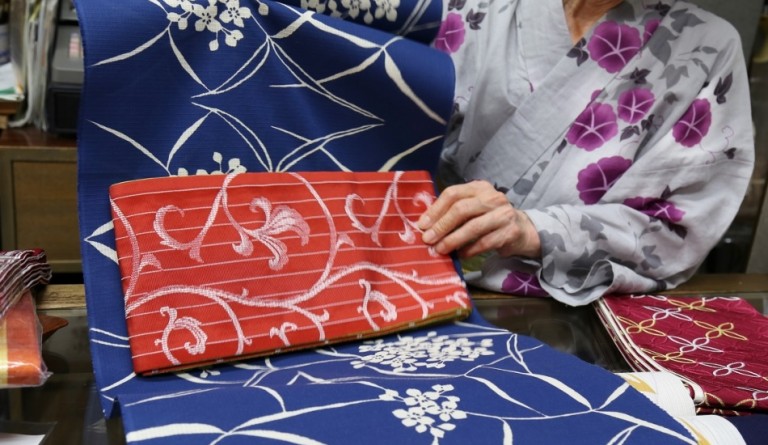The Way of Kimono
Published: March 2, 2018
Sunamachi Ginza Shopping Street in the Kitasuna area is a lively street where you can find a lot of tasty restaurants and interesting shops. Omiya Gofuku-ten is one of these amazing shops. This shop has been selling kimonos for 67 years!

In Japan, people wear kimono on different occasions: for attending tea ceremonies, watching fireworks in the summer, going and praying at a shrine during the New Year, etc. Some people wear them in their everyday life, both summer and winter, like Mrs. Kanbayashi does.
It’s common practice in Japan to take a baby to a Shinto shrine one month after their birth for “hatsumiya-mairi”, or literally “first visit to the shrine”. The baby is draped in a beautiful kimono for the ceremony.
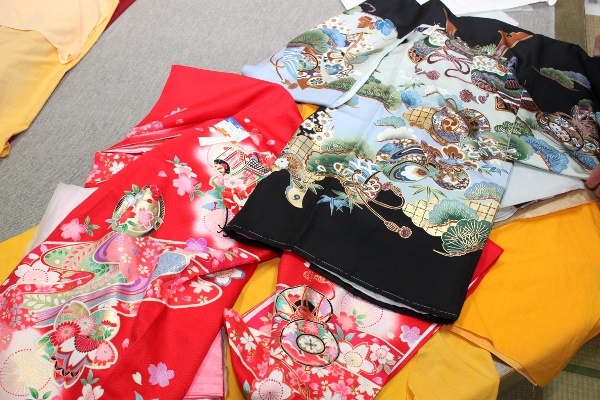
Look at the pattern and details—it’s so beautiful!
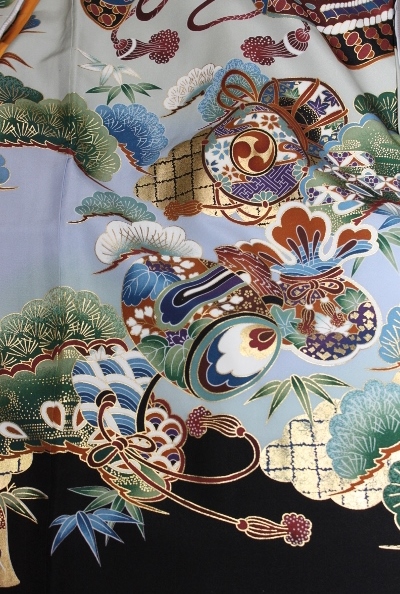
About kimono
The word kimono literally means “something you wear”. Kimonos are usually made of silk, but there are cotton and polyester kimonos as well. They can be very expensive!
These kimonos are worn on special occasions, like a wedding, for example. “They are made of silk,” explained Mrs. Kanbayashi.
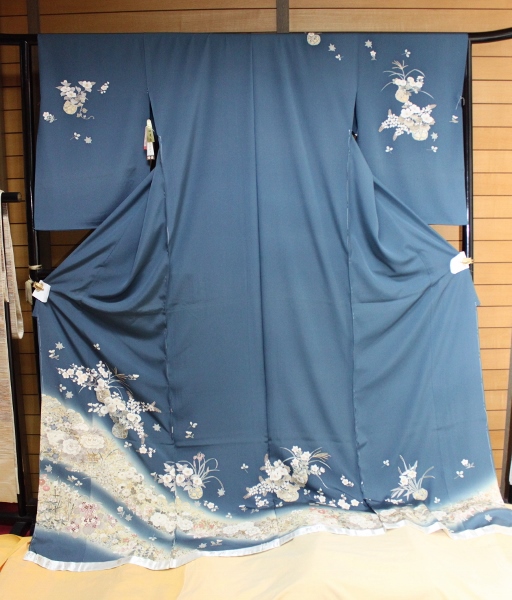
Most Japanese women don’t know how to put on a kimono by themselves, because it’s very difficult. People often have to take classes on wearing kimonos, how to choose them and how to tie the obi (the sash); or rely on “kimono dressers”, people who help others to put on a kimono.
This obi is amazing. The embroidery is very delicate and the traditional Japanese pattern is fantastic!

There are different types of formal and casual kimonos. Yukata is the informal kimono for summer, worn especially at outdoor festivals, or at hot spring resorts. Made of cotton, linen or hemp, yukata is worn by both women and men.
Here are dozens of pieces of fabric for making your own yukata at home, or getting one tailor-made!

“It’s traditional Japanese fabric! The pattern is hand-drawn. Can you imagine the time it takes to make such a fabric?”
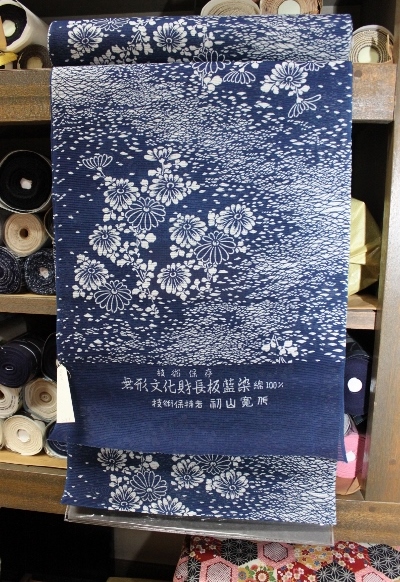
“This is the most expensive fabric in our shop. The stitches used for sewing the fabric are very small and precise,” said Mr. Kanbayashi.
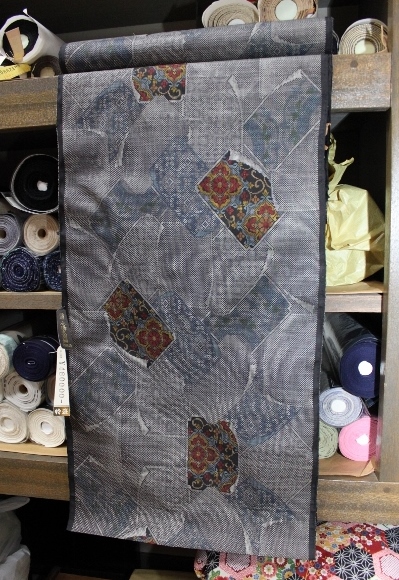
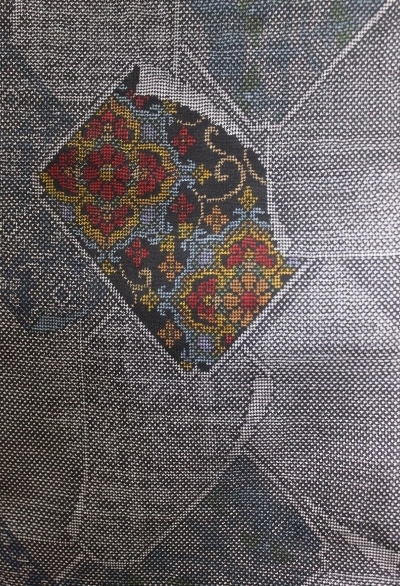
What are the kimono fashion trends? “Currently, people love flower patterns and pastel colours,” said Mr. Kanbayashi.
This is a small padded kimono for children. It’s very warm to help them get through the Japanese winter!
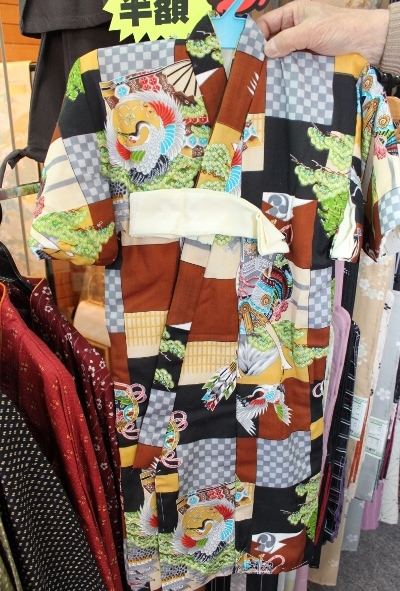
And what about shoes?
There are two kinds of traditional Japanese footwear: zori and geta. But what is the difference between them? Zori have flat bottoms and the surface is often made from leather, cloth or vinyl. Zori can also be made of lacquered wood or feature painted designs. Geta are sandals with an elevated wooden base called “teeth”. They produce a typical “clacking” sound.


You can also find beautiful scarves made with a Japanese manual dyeing technique at Omiya Gofuku-ten.
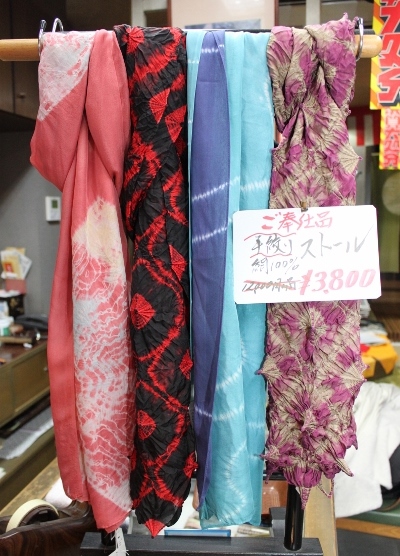
The flower pattern of these bags is very cute! It’s in a uniquely traditional Japanese style and perfect for the cherry blossom season!
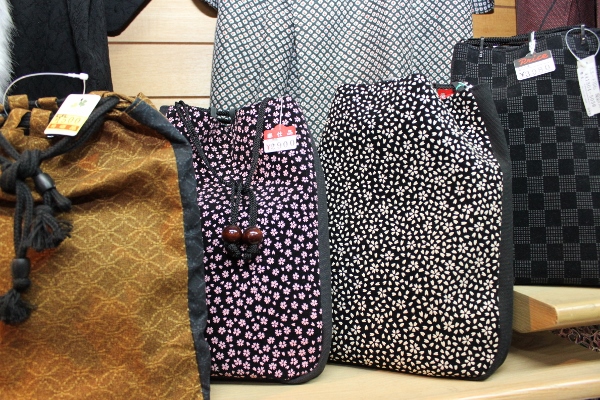
If you want to learn more about traditional Japanese clothes, don’t hesitate to visit Omiya Gofuku-ten! The quality and the beauty of clothes will help you immerse in Japanese culture and introduce you to the world of kimonos.
Story and Photos by Aline Lambelet

